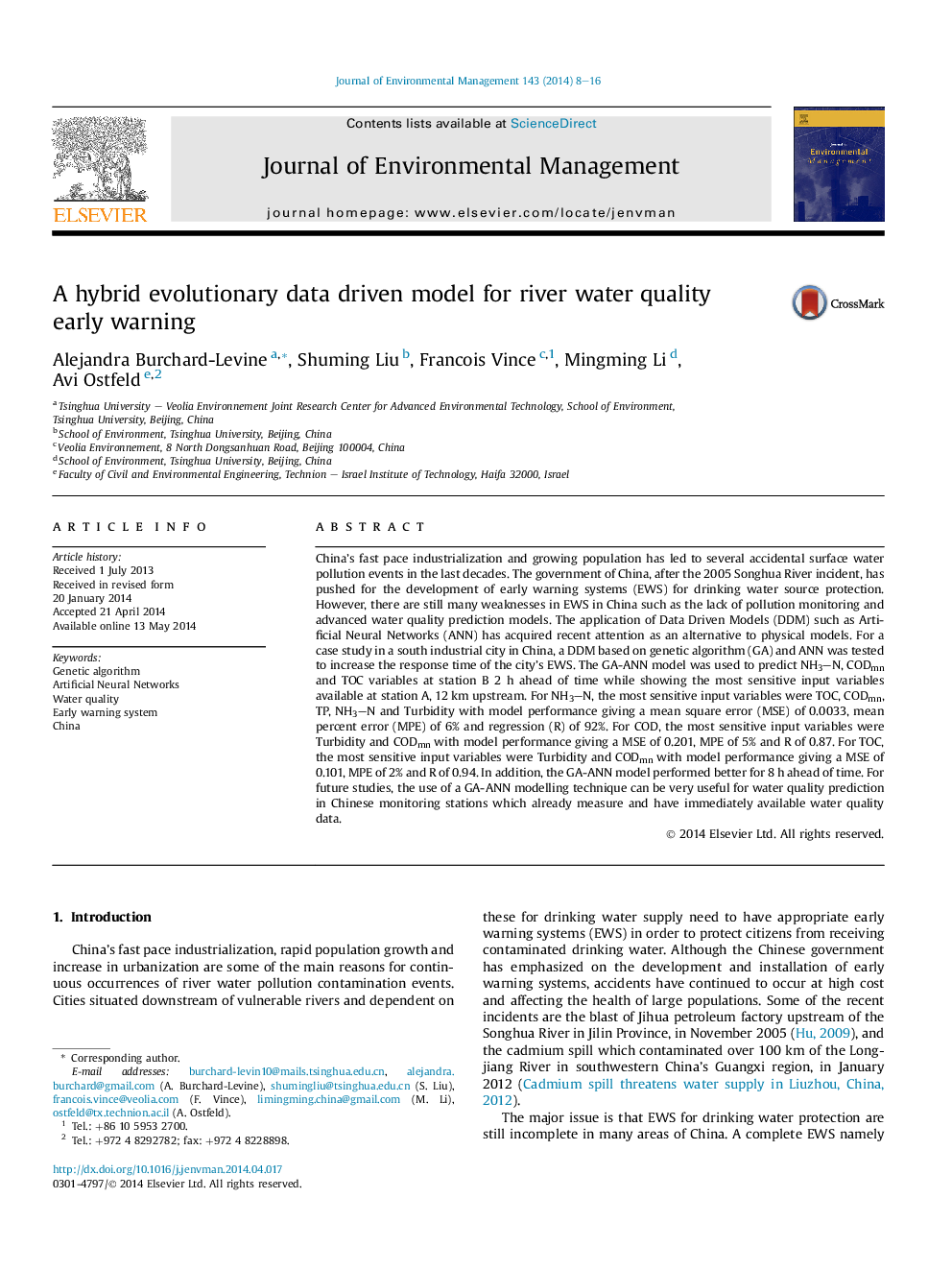| کد مقاله | کد نشریه | سال انتشار | مقاله انگلیسی | نسخه تمام متن |
|---|---|---|---|---|
| 1055748 | 1485269 | 2014 | 9 صفحه PDF | دانلود رایگان |
• We enhanced the early warning system of a city's drinking water source intake in Southern China.
• A Hybrid data-driven model based on Genetic Algorithms and Neural Networks was used.
• We predicted river water quality variables NH3–N, CODmn and TOC.
• The model performed well for 2 h and 8 h ahead of time prediction.
China's fast pace industrialization and growing population has led to several accidental surface water pollution events in the last decades. The government of China, after the 2005 Songhua River incident, has pushed for the development of early warning systems (EWS) for drinking water source protection. However, there are still many weaknesses in EWS in China such as the lack of pollution monitoring and advanced water quality prediction models. The application of Data Driven Models (DDM) such as Artificial Neural Networks (ANN) has acquired recent attention as an alternative to physical models. For a case study in a south industrial city in China, a DDM based on genetic algorithm (GA) and ANN was tested to increase the response time of the city's EWS. The GA-ANN model was used to predict NH3–N, CODmn and TOC variables at station B 2 h ahead of time while showing the most sensitive input variables available at station A, 12 km upstream. For NH3–N, the most sensitive input variables were TOC, CODmn, TP, NH3–N and Turbidity with model performance giving a mean square error (MSE) of 0.0033, mean percent error (MPE) of 6% and regression (R) of 92%. For COD, the most sensitive input variables were Turbidity and CODmn with model performance giving a MSE of 0.201, MPE of 5% and R of 0.87. For TOC, the most sensitive input variables were Turbidity and CODmn with model performance giving a MSE of 0.101, MPE of 2% and R of 0.94. In addition, the GA-ANN model performed better for 8 h ahead of time. For future studies, the use of a GA-ANN modelling technique can be very useful for water quality prediction in Chinese monitoring stations which already measure and have immediately available water quality data.
Journal: Journal of Environmental Management - Volume 143, 1 October 2014, Pages 8–16
